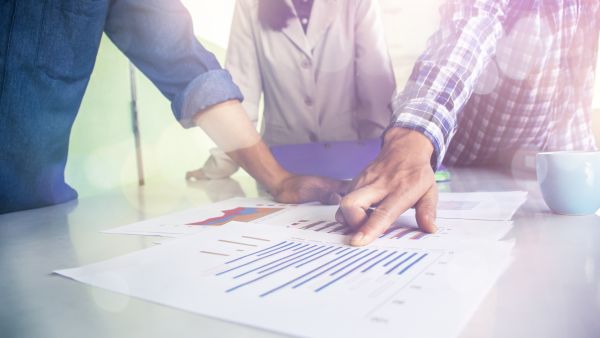1. Is 2014 the year when we ‘forget’ about the economic crisis and start a new growth cycle? Give us your personal opinion about the evolution of the Romanian economy in 2014 and beyond.
Romania has entered a gradual growth phase and this was witnessed in 2013. Growth is also forecast for both 2014 and 2015. GDP has also increased mainly due to a good evolution of exports. During 8 of the 12 months of 2013, the monthly exports volume exceeded 4bn euros, while in October 2013, the largest volume of exports in the history of Romanian exports was registered; therefore, the 2013 economic growth was mainly supported by export increase. As mentioned, the prognosis of the European Commission, International Monetary Fund and EBRD indicate economic growth for both 2014, of approximately 2.5%, and 2015. The threats are always present and most of them are external in nature, as noticed with the last economic crisis, therefore Romania needs to continue the path of reform and strategic growth measures, increase investments, which are in fact the real engine of any economic growth.
Let’s not forget the economic crisis; it has taught us a lesson or two about consumption, investment needs and strategic measures that should be applied in their due time. Romania has adopted a good strategy of growth and results will continue to emerge in the years to come. However, the pace is rather slow as this has been the case with any growth following an economic bust.
2. What will the next cycle of growth look like compared to the previous one? What has changed? What are the lessons we should not forget, in order not to repeat the mistakes of the past? How will the ‘new normal’ look for the Romanian economy?
If we look at economic growth and decline periods historically, we will notice that the very cause of each one of these resides in changes in business and business patterns and sustainable investments. The best indicators of recession and recovery thereof can be noticed in financial markets and industry. Their ups and downs showcase a dichotomy pattern between producing value and consuming. While investments collapse, consumption can remain steady or even increase by artificial support. So, I do believe that consumption does not necessarily produce output. Investment and productivity do! In fact, everything reduces to this: consumption is the goal, investment is the means. Not the other way around! Once a state starts to focus heavily on investment, implicitly, it starts to have increased productivity, increased trade, increased labor force, increased growth, increased consumption. We have to generate wealth before taking from it. And this wealth will be generated if we focus on increasing competitiveness in the industry.
I do perceive a change of paradigm, not only of patterns, in terms of economic growth, at international and European level due to a new series of norms and standards that have become common adoptees for states. As I come from the energy industry, I can tell you that we are more and more talking about the so-called ecological macroeconomic paradigm heavily based on CO2 reductions. For any state, energy industry and investment shift towards CO2 reduction related technologies poses a serious challenge that needs strategic rethinking in terms of investments. Global climate change is in direct relationship to economic growth, per se, however the path to reach such a sustainable development involves major changes of the status quo growth patterns.
3. Does Romania still have a future potential to attract FDI or do we have to ‘manage’ with internal resources?
First, internal resources should be used to their fullest potential. Entire micro economies could result from the wise, efficient use of internal resources. On the other hand, FDI can provide valuable and long lasting effects at both micro and macro level, under the conditions of the win-win situation.
Romania has the potential to attract FDI. If you look at different country reports on Romania, conducted by different specialized entities, you will find that Romania is described as being more and more attractive for foreign investors and among the most important enabling factors, you will find sustained economic growth, policy stability in various fields, enabling legislation, monetary and fiscal policies to support market newcomers.
Furthermore, these days, Romania has regained its investment credit rating after six years at Standard & Poor’s, with a stable rating outlook and the fiscal and reform programs exceeding expectations.
Keeping the right balance between stimulating competition, productivity and efficiency, on one hand, and the potential detrimental impact on national economy, on the other hand, while simultaneously increasing the percent of reinvested FDI profit in Romania, represents a mutual advantage that cannot be ignored by either party.
And we have seen such investments in Romania in the recent years. I can only presume, given the available data, that this trend will continue on the medium and long term.


















![[Opportunity Minded] Market Penetration and Growing Your Market Share](https://doingbusiness.ro/media/covers/6965fb6bd2416_cover.jpg)











